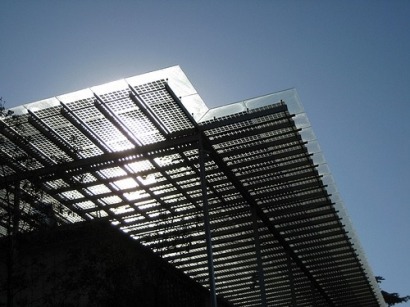
The development of wind and solar projects in Japan will generate highly attractive returns under the feed-in-tariffs recently proposed by the Japanese government, according to clean energy market research provider Bloomberg New Energy Finance. This is despite much higher costs for solar in Japan than elsewhere in the world.
Since the Fukushima nuclear disaster a year ago Japan has been grappling with the need to diversify its energy mix. One of the policy measures adopted by the government, a renewable feed-in tariff (FiT) programme, starts July 2012 and has the potential to accelerate renewable electricity generation across the country. If the Japanese government implements the rates it is now proposing, they will rank among the world’s most attractive support mechanisms for renewables.
Bloomberg New Energy Finance estimates that under the proposed tariffs solar and wind projects could achieve equity returns as high as 44% and 51%, respectively. This will lead to a surge in project proposals, particularly for the solar PV industry. Depending on how projects are treated by Japan’s traditionally conservative planning regime, Japan could see a cumulative 20GW of wind and solar capacity by 2014. This would require total investments of up to $37.5bn over the next three years, assuming costs stay near current levels.
In the longer term, renewable costs will decline, enabling accelerating renewable deployment across the country despite aggressive reductions in the very generous initial tariffs on offer.
Yugo Nakamura, head of Japan research at Bloomberg New Energy Finance, said: “The government faces the challenge of picking the best rate for stimulating renewable energy investment while not over-paying for clean power. With the very high rates which have been proposed there is a very real risk that Japan will experience the same boom-bust cycles we’ve seen in other countries.”
The latest research note from the Bloomberg New Energy Finance Tokyo team examines the real costs of generation from clean technologies in Japan and compares them with those for fossil generation – key analysis as Japan contemplates its post-Fukushima energy future. Bloomberg New Energy Finance also finds that clean energy costs today in Japan today are substantially higher than elsewhere in the world due to a relative lack of competition, but will likely fall as competition heats up.
Because of the attractive returns offered to investors from the new FiT, Bloomberg New Energy Finance foresees strong growth for Japan’s renewable market, specifically for solar PV. The firm projects over 10GW of new solar and 0.7GW of new wind installed by 2014, requiring investments of $12.5bn/yr over the next three years. New solar project development will take off immediately while new wind capacity will ramp up from 2015 onwards due to longer lead times in developing those projects. Japan could become the third largest solar market in the world by 2014.
Milo Sjardin, head of Asia at Bloomberg New Energy Finance commented: “The feed-in-tariff scheme has the potential to significantly alter Japan’s energy future. The country may build enough distributed solar capacity over the next three years to equal the electricity output from almost three nuclear power stations, and do so in a fraction of the development time. To enable further renewable deployment beyond that, the country will likely have to liberalise its power sector.”
For additional information:

